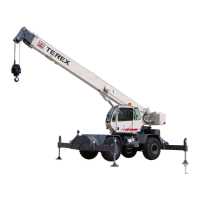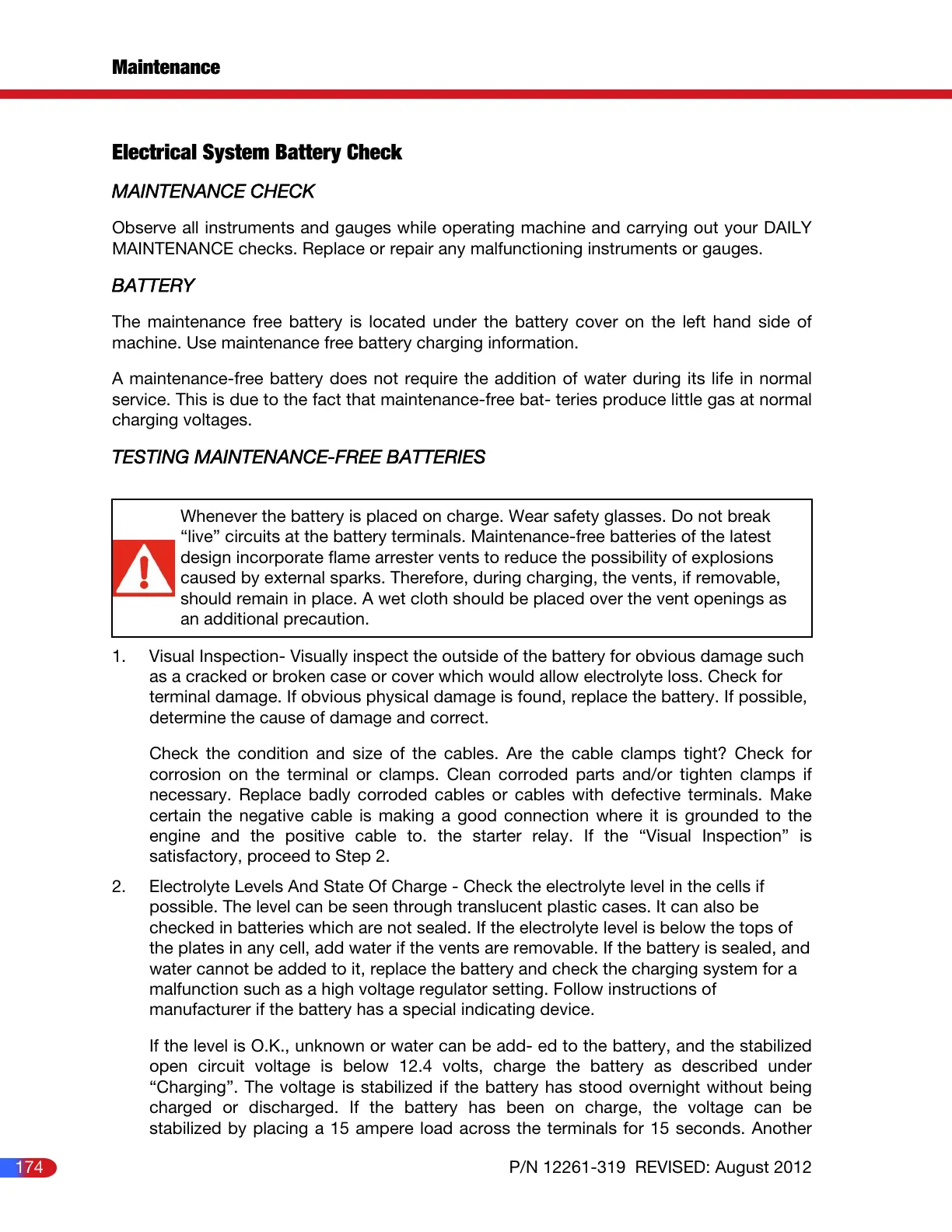Electrical System Battery Check
MAINTENANCE CHECK
Observe all instruments and gauges while operating machine and carrying out your DAILY
MAINTENANCE checks. Replace or repair any malfunctioning instruments or gauges.
BATTERY
The maintenance free battery is located under the battery cover on the left hand side of
machine. Use maintenance free battery charging information.
A maintenance-free battery does not require the addition of water during its life in normal
service. This is due to the fact that maintenance-free bat- teries produce little gas at normal
charging voltages.
TESTING MAINTENANCE-FREE BATTERIES
Whenever the battery is placed on charge. Wear safety glasses. Do not break
“live” circuits at the battery terminals. Maintenance-free batteries of the latest
design incorporate flame arrester vents to reduce the possibility of explosions
caused by external sparks. Therefore, during charging, the vents, if removable,
should remain in place. A wet cloth should be placed over the vent openings as
an additional precaution.
1. Visual Inspection- Visually inspect the outside of the battery for obvious damage such
as a cracked or broken case or cover which would allow electrolyte loss. Check for
terminal damage. If obvious physical damage is found, replace the battery. If possible,
determine the cause of damage and correct.
Check the condition and size of the cables. Are the cable clamps tight? Check for
corrosion on the terminal or clamps. Clean corroded parts and/or tighten clamps if
necessary. Replace badly corroded cables or cables with defective terminals. Make
certain the negative cable is making a good connection where it is grounded to the
engine and the positive cable to. the starter relay. If the “Visual Inspection” is
satisfactory, proceed to Step 2.
2. Electrolyte Levels And State Of Charge - Check the electrolyte level in the cells if
possible. The level can be seen through translucent plastic cases. It can also be
checked in batteries which are not sealed. If the electrolyte level is below the tops of
the plates in any cell, add water if the vents are removable. If the battery is sealed, and
water cannot be added to it, replace the battery and check the charging system for a
malfunction such as a high voltage regulator setting. Follow instructions of
manufacturer if the battery has a special indicating device.
If the level is O.K., unknown or water can be add- ed to the battery, and the stabilized
open circuit voltage is below 12.4 volts, charge the battery as described under
“Charging”. The voltage is stabilized if the battery has stood overnight without being
charged or discharged. If the battery has been on charge, the voltage can be
stabilized by placing a 15 ampere load across the terminals for 15 seconds. Another
Maintenance
174 P/N 12261-319 REVISED: August 2012
Courtesy of Crane.Market

